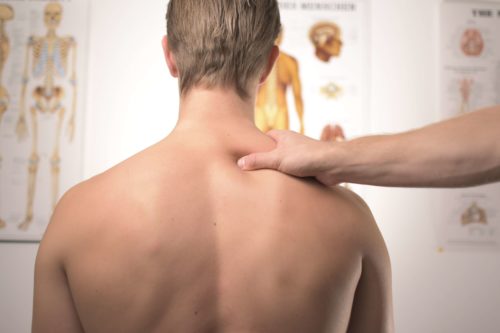Musculoskeletal disorders (MSDs)
Musculoskeletal disorders (MSDs) are injuries or pain in the musculoskeletal system, including the joints, ligaments, muscles, nerves, tendons, and structures that support limbs, neck and back.
MSDs can arise from a sudden exertion (e.g., lifting a heavy object), or they can arise from making the same motions repeatedly repetitive strain, or from repeated exposure to force, vibration, or awkward posture.
Common MusculoSkeletal Disorders include:
Muscle Aches
- Muscle strain
- Rotator Cuff Tendonitis
- Epicondylitis
- Tendon strain
Nerve Aches
- Numbness / Tingling
- Digital Neuritis
- Radial Tunnel Syndrome
- Trigger Finger
Joint Aches
- Ligament Sprain
- Joint pain
- Proprioception
- Tear
And more
- Mechanical Back Syndrome
- TMJ pain
- Stress
- Anxiety
How to Reduce MSD through Osteopathy?
Manual therapy
A session to release your lower back pain will consist of an evaluation to determine the state of the body and the response to any previous treatments.This is followed by a hands-on manual therapy, working with the bones, joints and soft tissues of the body including the tendons, ligaments, muscles and fascia.
Physical Activity
Physical Activity is defined as any bodily movement produced by contraction of skeletal muscles that require energy expenditure. It includes exercise as well as other activities which involve bodily movement and are done as part of playing, working, active transportation, house chores and recreational activities.
References
Work related musculoskeletal injuries sustained by Australian osteopaths: qualitative analysis of effects on practitioner health, clinical practice, and patient care
https://www.ncbi.nlm.nih.gov/pmc/articles/PMC5625704/
Risk factors for work-related musculoskeletal disorders: A systematic review of recent longitudinal studies
https://pubmed.ncbi.nlm.nih.gov/19753591/
Interventions for the prevention and management of neck/upper extremity musculoskeletal conditions: a systematic review
https://pubmed.ncbi.nlm.nih.gov/16973739/
Here is what the scientific literature has to say:
Work-related musculoskeletal disorders: the epidemiologic evidence and the debate. Journal of Electromyography and Kinesiology – Punnett L & Wegman DH
“Thus there is an international near-consensus that musculoskeletal disorders are causally related to occupational ergonomic stressors, such as repetitive and stereotyped motions, forceful exertions, non-neutral postures, vibration, and combinations of these exposures.”
MSDs can affect many different parts of the body including upper and lower back, neck, shoulders and extremities (arms, legs, feet, and hands).










